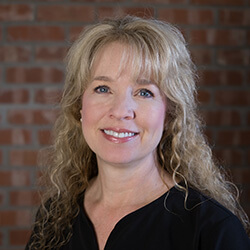How to Successfully Implement New Procedures in Your Practice

“I just got back from this great course in Comprehensive Orthodontics for General Practice. I want to start doing this in the office immediately!” the dentist announces at the Monday morning huddle.
Often, dentists take continuing education courses in areas where they had no previous training. They return to the office “all fired up” because this is going to be the new pathway to increasing office production. Orthodontics, implant dentistry, sleep apnea/snoring management, Snap-on Smiles, and cosmetic veneers are just a few examples of these dentists’ “new ideas for the office.”
Of course, the office manager and the front desk staff, as well as the clinical team, have heard it all before.
The office manager cringes, realizing the instant she hears the dentist’s announcement, she will face huge expenses as the dentist orders all the equipment and supplies to support this new procedure. She thinks of the closet at the back of the clinic, filled with all the supplies and tools that are collecting dust from previous “new ideas” that flopped.
Unfortunately, after a few months and a lot of confusion, the well-intentioned dentist is ultimately discouraged because it just isn’t working out and the latest attempt at implementing a fresh new group of procedures, fails. Why did this happen?
Preparing Your Team Appropriately
Even though the dentist may have trained extensively for the delivery of these procedures, he overlooks the most important training of all, the office staff. If new procedures are to be successfully introduced into the office workflow, training the staff is just as crucial as training the dentist.
Dentists are procedure-oriented, clinical-focused people. They seldom think of the team when they take these procedure-driven courses.
The best approach to implementing new, innovative services is to team train very early in the process.
Clinical assistants have to be made familiar with the procedure, the armamentarium, the patient care, and the time requirements. The dentist is not well-positioned to be the trainer on procedures that are new to him. Therefore, in order to avoid these “failure to launch” situations, look for courses that offer assistant training or better yet, train the doctor and assistant together.
However, even if the clinical team is a thoroughly trained, well-oiled machine, overlooking the inclusion of the front desk and business office in this training/educational process will almost always create an insurmountable obstacle in successfully launching new procedures.
The reality is that unless the front desk understands the procedure and can map out the office workflow, these new procedures will just never get off the ground.
The insurance coordinator needs to know how to correctly code the procedures, and how the insurance carrier is going to respond.
The financial coordinator needs to know fees, the appropriate UCR fees, and what the patient time frame from the beginning of treatment to the final delivery of the services entails.
The appointment coordinator needs to know the procedures involved, all the step-visits needed, how much time to assign to each appointment (x-factors if you use Perfect Day Scheduling) the time between visits, how much time can be assigned to the doctor versus the chairside assistant and all of the instructions for homecare that need to be printed and imparted to the patient following the more invasive visits.
Ultimately, the entire dental office staff needs to be trained just as thoroughly as the dentist to implement any new procedure. Team training, and having everyone “on board” is the key to successfully launching any new service the dental office is considering.
About the Author

Teresa Berry Williams is the current office manager for Williams Dental & Orthodontics. She has been leading the business management team at Williams GP Orthodontic Seminars for the last 5 years. She holds degrees in Business Administration & Commercial Art.
She and her late husband managed multiple businesses in Oklahoma, where The Journal Record named her Woman of the Year “50 Making a Difference”. Teresa married Dr. Brad Williams in 2012 and began to use her business experience in managing his practice. With his encouragement, Teresa developed Managing Orthodontics, a one-day training management seminar for fellow dental professionals.
Teresa is a lifetime AADOM member, receiving her Fellowship designation in 2018 and her AADOM Mastership (MAADOM) in 2021. Teresa was inducted as an AADOM Diplomate this year at the national meeting in Scottsdale in early September.







